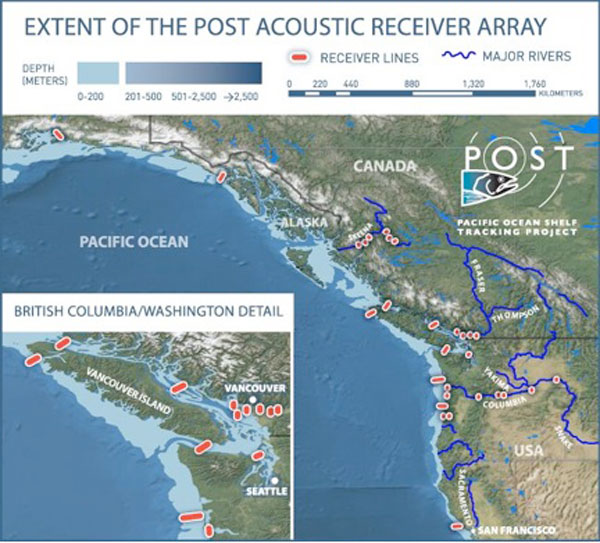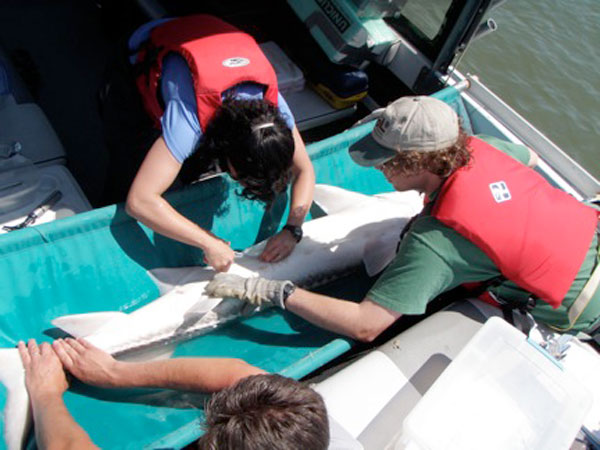New Implants Reveal Whereabouts of Ocean Fish


VANCOUVER, British Columbia – Fish tagging has entered the 21st century: Researchers have developed ways to tag and track marine creatures that don't require the animals' recapture while also providing broader insight into their habitat.
Past methods of tagging fish have included stapling a numbered tag to them, cutting off a fin to mark them, or inserting a small magnetic wire tag into the nose cartilage, to identify batches of released juvenile salmon.
The problem? All of these methods required recapturing the animals after release, which meant they died. Furthermore, the methods could be used only on relatively large animals.
New acoustic-based telemetry systems allow tagging fish down to 5 inches (13 centimeters) long, by surgically implanting a small transmitter into the animal's body cavity. The implant transmits an ID code to a series of autonomous receivers strategically placed in lines along the sea floor or in major rivers.
The head of a company that designs such systems discussed them here at the annual meeting of the American Association for the Advancement of Science last weekend, and presented information gathered by a giant acoustic array on the floor of the Pacific Ocean.
More information
David Welch, chief executive of Kintama Research Services, said that even though these systems require more human labor, they are more useful for making policy decisions because they measure a much longer time in an animal's life, operating over many months or years. Even when an animal is eaten, the tag can transmit that information, giving insight into the life cycles and mortality of different groups of fish.
Get the world’s most fascinating discoveries delivered straight to your inbox.
"Biotelemetry is coming of age," Welch said. "Research is starting to move from observation into doing large-scale experiments in the ocean environment. Theories get shot down quickly, but the science moves forward much more quickly."
These telemetry systems are exemplified by the West Coast's POST array, hosted by the Vancouver Aquariums, and Dalhousie University's $168 million CDN Ocean Tracking Network, which will be a network of regional array systems.
The POST array is already tackling pressing problems. One issue is trying to understand what happens when juvenile salmon on their way to the sea encounter fish farms. During the past two decades, stocks of wild salmon in British Columbia have collapsed, with marine survival falling by a factor of 10.
Tracking salmon
The reasons for the poor survival of salmon in the ocean remain unclear, Welch said. Whether this is cause-and-effect (fish farming driving down wild stocks, possibly through disease transfer) or coincidence (large-scale changes in climate occurring at the same time) is uncertain, he said.
So far, the researchers have been able to observe different mortality rates in two different stocks of juveniles — one that does not migrate past fish farms and one that does. The next step is to set up an experiment and create a sort of drug trial for salmon. Half the salmon will be exposed to fish farms for a week or two, and the other half will not.
This kind of experiment in natural systems is exciting, Welch said. "Ten years ago we didn't know where animals were in ocean. Now we're able to follow fish 5 inches and up, and in the future we'll be able to monitor creatures even as small as a minnow. This is really only at the early stages."
Follow OurAmazingPlanet for the latest in Earth science and exploration news on Twitter @OAPlanet and on Facebook.



